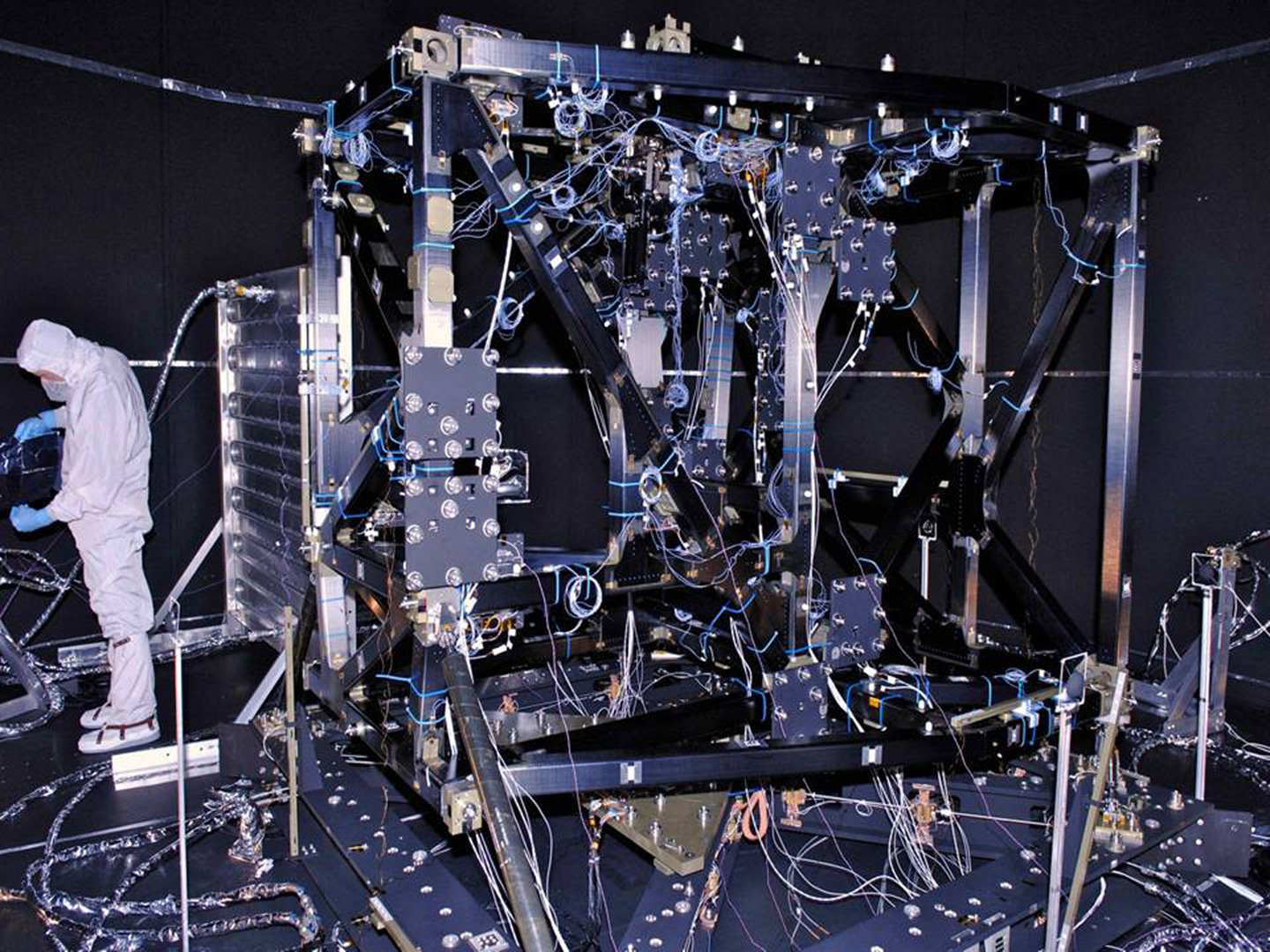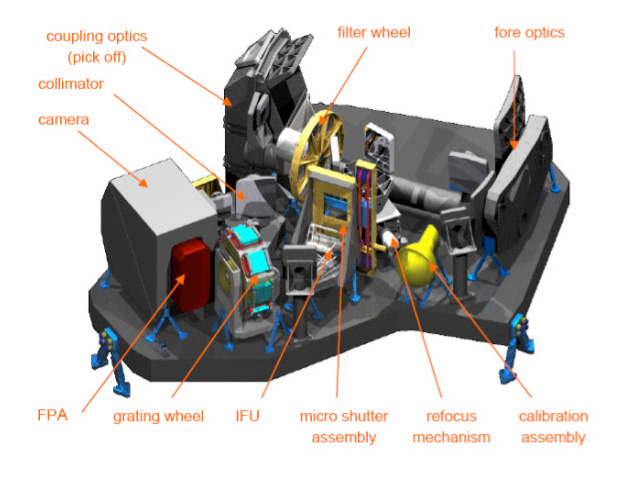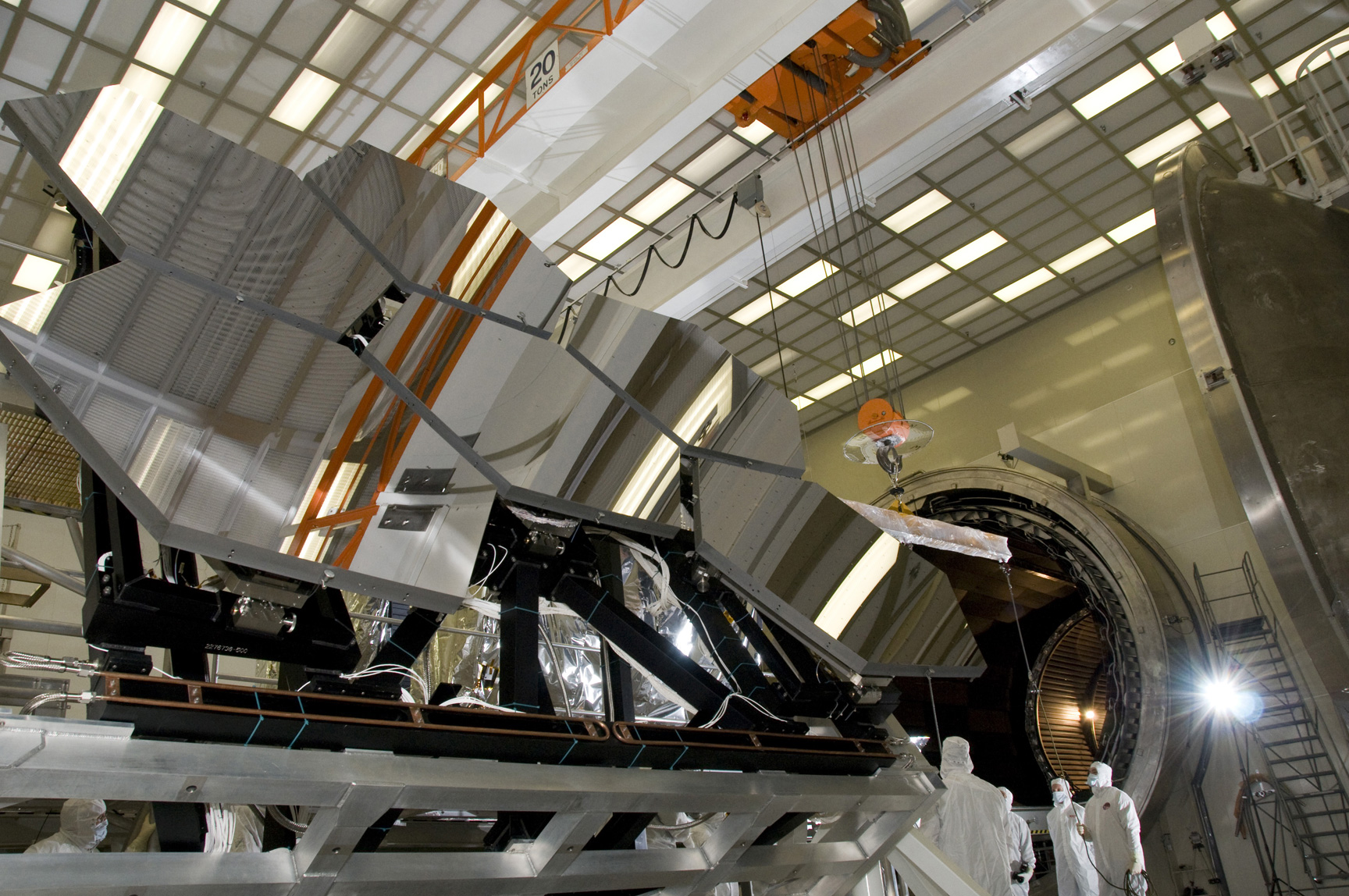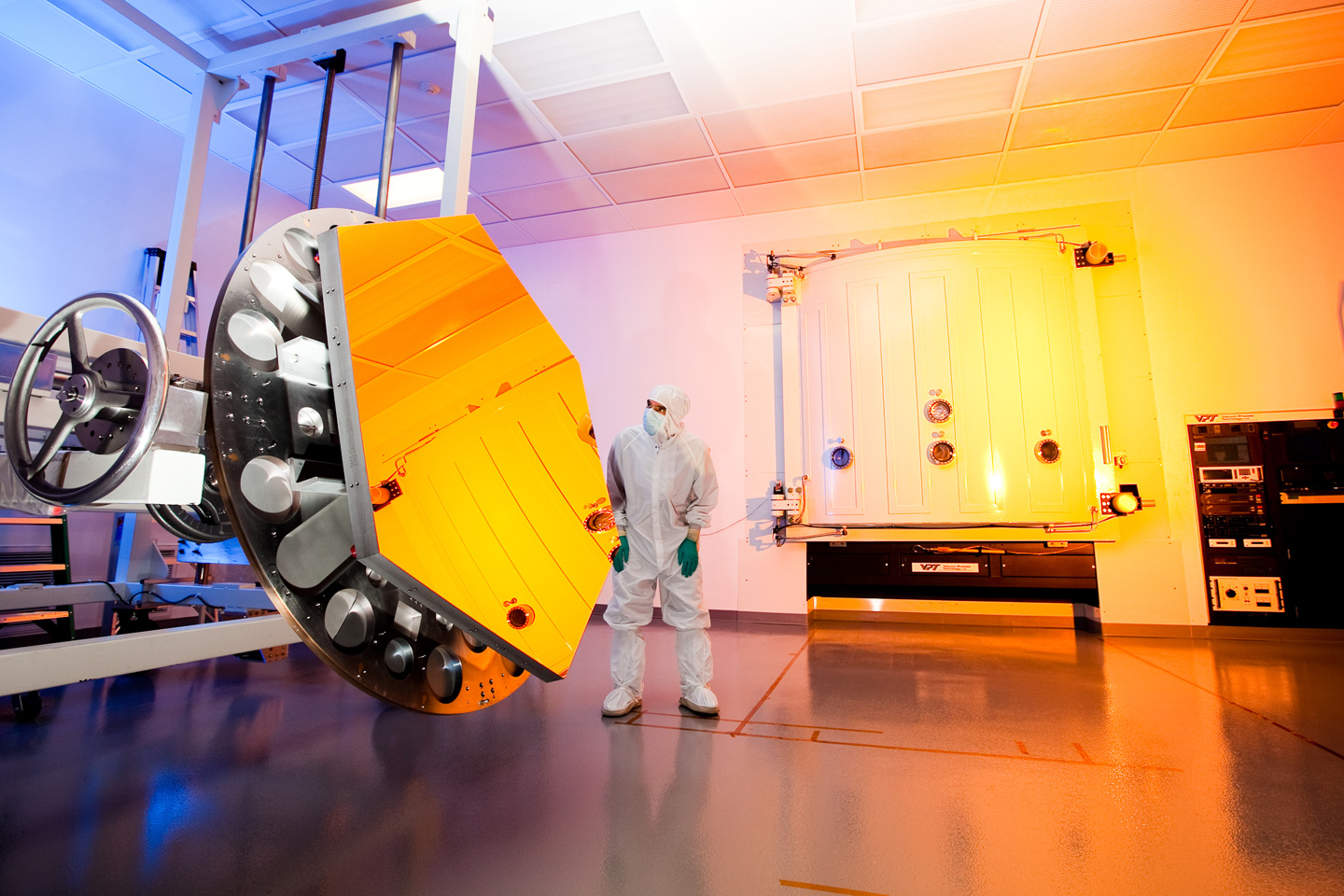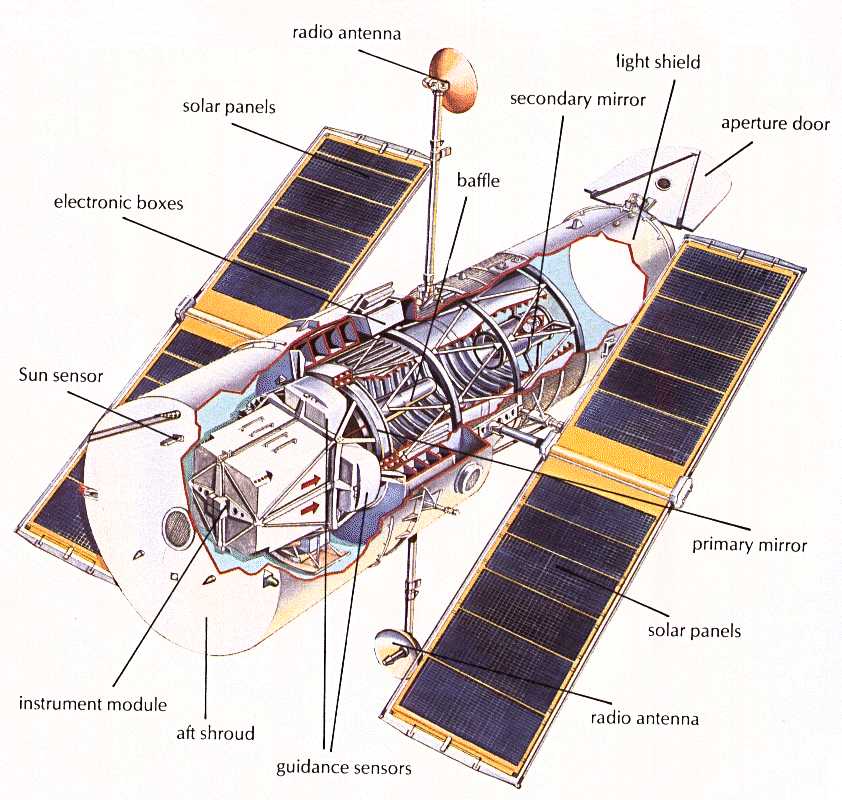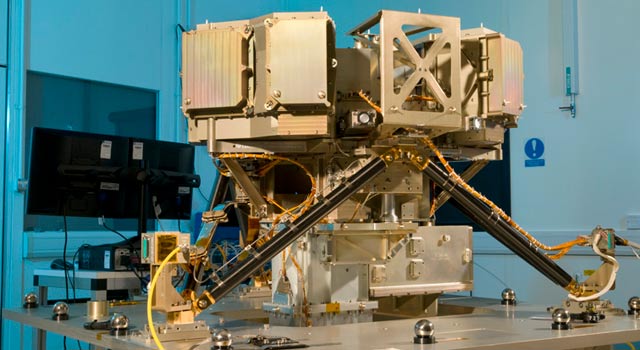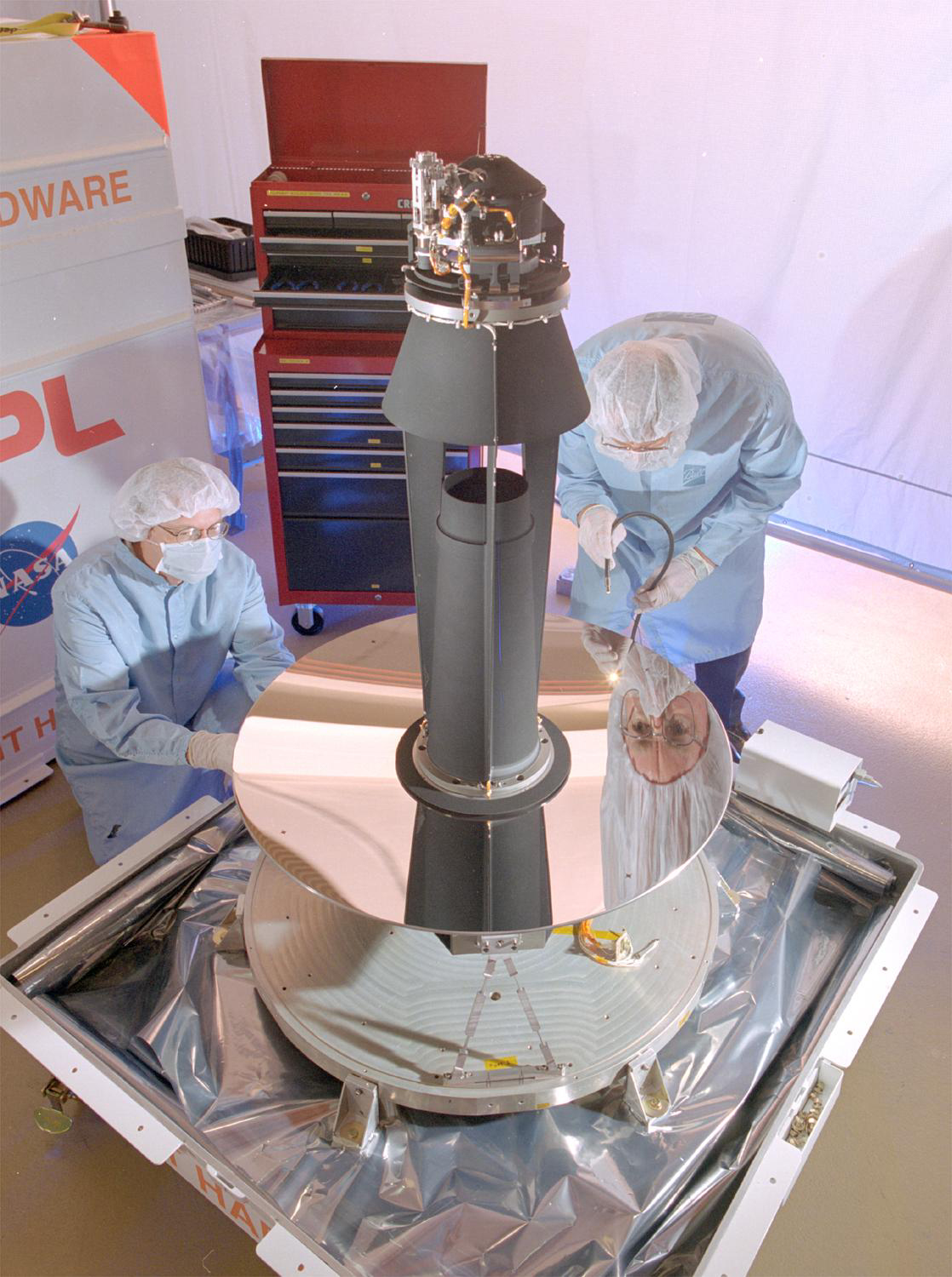The James Webb Space Telescope
The James Webb Space Telescope
The James Webb Space Telescope
James Webb Space Telescope - Wikipedia, the free encyclopedia
O telescópio espacial James Webb, que será lançado em 2018, vai substituir o telescópio espacial Hubble.
O James Webb será uma das mais complexas naves espaciais já lançadas.
O James Webb captará luz infra-vermelha [600 nm até 28500 nm].
O James Webb terá um espelho principal de 6.5 metros de diâmetro (contra 2.4 metros do Hubble), revestido com ouro e dividido em 18 segmentos hexagonais.
O Hubble órbita a Terra a 560 km de altitude. O James Webb ficará no 2º ponto de Lagrange, a 1.5 milhões de km da Terra.
Lagrangian point - Wikipedia, the free encyclopedia
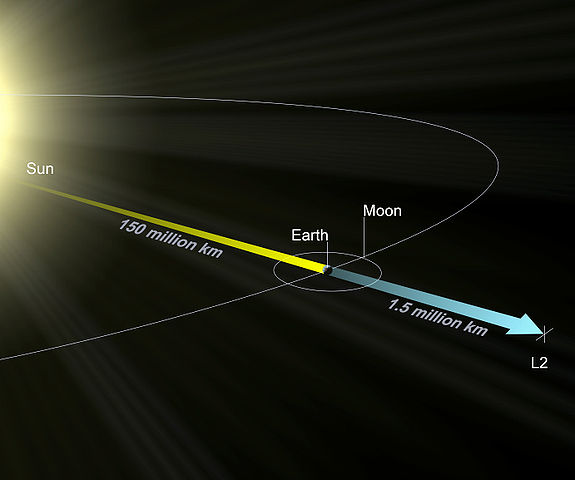
Varias empresas, centros de pesquisa, universidades e milhares de astrônomos, físicos e engenheiros estão envolvidos no projeto e construção do James Webb
A Northrop Grumman é responsável pelo desenvolvimento e integração da nave espacial. A Ball Aerospace é responsável pelo desenvolvimento do Optical Telescope Element (OTE). O Goddard Space Flight Center (NASA) é responsável por fornecer o Integrated Science Instrument Module (ISIM). A Lockheed-Martin, a EADS Astrium, a Carl Zeiss Optronics, a IBM e outras empresas também são responsáveis pelo projeto e desenvolvimento de componentes do James Webb.
Instrumentos Científicos que ficarão dentro do ISIM (Integrated Science Instrument Module)
● Mid-Infrared Instrument (MIRI) → MIRI is being developed as a collaboration between NASA and a consortium of European countries, and is led by George Rieke (University of Arizona) and Gillian Wright (astronomer, UK Astronomy Technology Centre, Edinburgh, part of the Science and Technology Facilities Council (STFC)). MIRI features similar wheel mechanisms as NIRSpec which are also developed and built by Carl Zeiss Optronics GmbH under contract from the Max Planck Institute for Astronomy, Heidelberg.
The James Webb Space Telescope
● Near-Infrared Camera (NIRCam) → NIRCam is being built by a team led by the University of Arizona, with Principal Investigator Marcia Rieke. The industrial partner is Lockheed-Martin's Advanced Technology Center located in Palo Alto, California.
The James Webb Space Telescope
● Near-Infrared Spectrograph (NIRSpec) → NIRSpec is being built by the European Space Agency at ESTEC in Noordwijk, the Netherlands, leading a team involving EADS Astrium, Ottobrunn, and Friedrichshafen, Germany, and the Goddard Space Flight Center.
The James Webb Space Telescope
● Fine Guidance Sensor/ Near InfraRed Imager and Slitless Spectrograph (FGS/NIRISS) → Provided by the Canadian Space Agency.
The James Webb Space Telescope

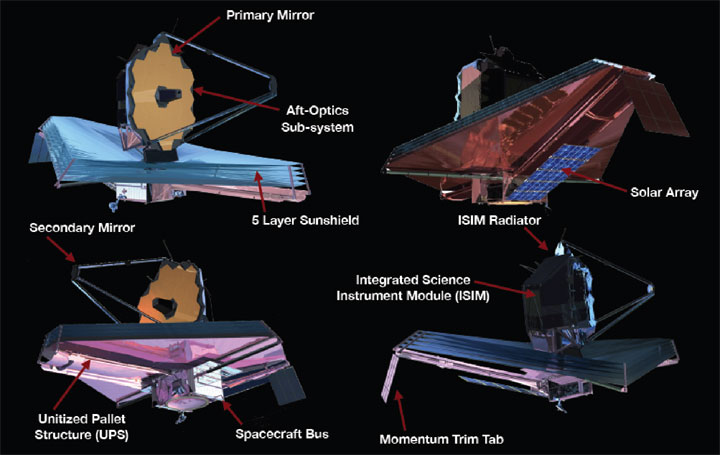
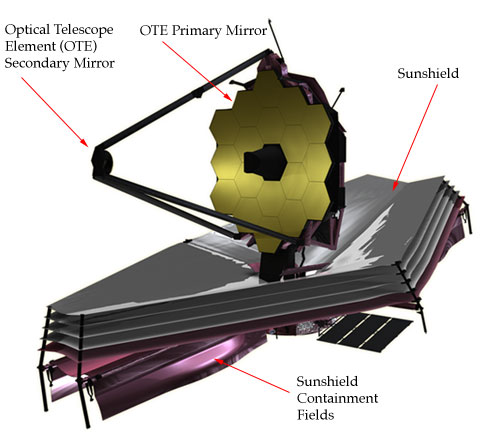

ISIM (Integrated Science Instrument Module) - Estrutura onde ficarão os Instrumentos Científicos
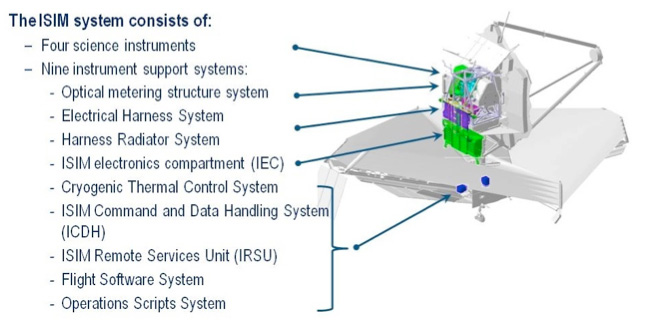

O James Webb viajará com o espelho dobrado dentro do compartimento de carga do foguete Ariane V

Espelhos Primário, Secundário e Terciário


The James Webb Space Telescope
The James Webb Space Telescope
James Webb Space Telescope - Wikipedia, the free encyclopedia
O telescópio espacial James Webb, que será lançado em 2018, vai substituir o telescópio espacial Hubble.
O James Webb será uma das mais complexas naves espaciais já lançadas.
O James Webb captará luz infra-vermelha [600 nm até 28500 nm].
O James Webb terá um espelho principal de 6.5 metros de diâmetro (contra 2.4 metros do Hubble), revestido com ouro e dividido em 18 segmentos hexagonais.
O Hubble órbita a Terra a 560 km de altitude. O James Webb ficará no 2º ponto de Lagrange, a 1.5 milhões de km da Terra.
The orbit of the JWST will be an elliptical orbit (with a radius of 800,000 kilometres (500,000 mi)) around the semi-stable second Lagrange point, or L2. The Earth–Sun L2 point, about which the Webb telescope will orbit, is 1,500,000 kilometres (930,000 mi) from the Earth, nearly 4 times farther than the distance between the Earth to the Moon. At such a great distance, the Webb telescope would be more difficult to service after launch than the Hubble telescope. Nevertheless, a docking ring was added to the design in 2007 to facilitate this possibility, either by a robot or future crewed spacecraft such as MPCV.
Normally, an object circling the Sun further out than the Earth would take more than one year to complete its orbit. However, the balance of gravitational pull at the L2 point (in particular, the extra pull from Earth as well as the Sun) means that JWST will keep up with the Earth as it goes around the Sun. The combined gravitational forces of the Sun and the Earth can hold a spacecraft at this point, so that in theory it takes no rocket thrust to keep a spacecraft in orbit around L2. In reality, the stable point is comparable to that of a ball balanced upon a saddle shape. Along one direction any perturbation will drive the ball toward the stable point, while in the crossing direction the ball, if disturbed, will fall away from the stable point. Thus some station-keeping is required, but with little energy expended (only 2–4 m/s per year, from the total budget of 150 m/s).
Since the JWST must be kept very cold to make accurate observations of distant astronomical objects, it has been designed with a large sunshield that blocks light and heat from the Sun. In order for such a shield to work properly, the Sun's rays must be constantly coming from the same direction. To achieve this outcome, JWST will be put into a relatively large "halo orbit" around L2. From the L2 point itself, the Earth eclipses 90% of the disk of the Sun at all times and neither one appears to move at all, though lateral movement of the Moon can be seen. However, the radius of the Webb telescope's orbit around L2 will be so large that neither the Earth nor Moon will eclipse the Sun, allowing the shield to deal with a relatively constant sunlight environment. This was considered to be more important than attempting to utilize the Earth's shadow to block some of the sunlight, in an orbit nearer the exact L2 point.
Normally, an object circling the Sun further out than the Earth would take more than one year to complete its orbit. However, the balance of gravitational pull at the L2 point (in particular, the extra pull from Earth as well as the Sun) means that JWST will keep up with the Earth as it goes around the Sun. The combined gravitational forces of the Sun and the Earth can hold a spacecraft at this point, so that in theory it takes no rocket thrust to keep a spacecraft in orbit around L2. In reality, the stable point is comparable to that of a ball balanced upon a saddle shape. Along one direction any perturbation will drive the ball toward the stable point, while in the crossing direction the ball, if disturbed, will fall away from the stable point. Thus some station-keeping is required, but with little energy expended (only 2–4 m/s per year, from the total budget of 150 m/s).
Since the JWST must be kept very cold to make accurate observations of distant astronomical objects, it has been designed with a large sunshield that blocks light and heat from the Sun. In order for such a shield to work properly, the Sun's rays must be constantly coming from the same direction. To achieve this outcome, JWST will be put into a relatively large "halo orbit" around L2. From the L2 point itself, the Earth eclipses 90% of the disk of the Sun at all times and neither one appears to move at all, though lateral movement of the Moon can be seen. However, the radius of the Webb telescope's orbit around L2 will be so large that neither the Earth nor Moon will eclipse the Sun, allowing the shield to deal with a relatively constant sunlight environment. This was considered to be more important than attempting to utilize the Earth's shadow to block some of the sunlight, in an orbit nearer the exact L2 point.
Lagrangian point - Wikipedia, the free encyclopedia

Varias empresas, centros de pesquisa, universidades e milhares de astrônomos, físicos e engenheiros estão envolvidos no projeto e construção do James Webb
A Northrop Grumman é responsável pelo desenvolvimento e integração da nave espacial. A Ball Aerospace é responsável pelo desenvolvimento do Optical Telescope Element (OTE). O Goddard Space Flight Center (NASA) é responsável por fornecer o Integrated Science Instrument Module (ISIM). A Lockheed-Martin, a EADS Astrium, a Carl Zeiss Optronics, a IBM e outras empresas também são responsáveis pelo projeto e desenvolvimento de componentes do James Webb.
Instrumentos Científicos que ficarão dentro do ISIM (Integrated Science Instrument Module)
● Mid-Infrared Instrument (MIRI) → MIRI is being developed as a collaboration between NASA and a consortium of European countries, and is led by George Rieke (University of Arizona) and Gillian Wright (astronomer, UK Astronomy Technology Centre, Edinburgh, part of the Science and Technology Facilities Council (STFC)). MIRI features similar wheel mechanisms as NIRSpec which are also developed and built by Carl Zeiss Optronics GmbH under contract from the Max Planck Institute for Astronomy, Heidelberg.
The James Webb Space Telescope
● Near-Infrared Camera (NIRCam) → NIRCam is being built by a team led by the University of Arizona, with Principal Investigator Marcia Rieke. The industrial partner is Lockheed-Martin's Advanced Technology Center located in Palo Alto, California.
The James Webb Space Telescope
● Near-Infrared Spectrograph (NIRSpec) → NIRSpec is being built by the European Space Agency at ESTEC in Noordwijk, the Netherlands, leading a team involving EADS Astrium, Ottobrunn, and Friedrichshafen, Germany, and the Goddard Space Flight Center.
The James Webb Space Telescope
● Fine Guidance Sensor/ Near InfraRed Imager and Slitless Spectrograph (FGS/NIRISS) → Provided by the Canadian Space Agency.
The James Webb Space Telescope




ISIM (Integrated Science Instrument Module) - Estrutura onde ficarão os Instrumentos Científicos


O James Webb viajará com o espelho dobrado dentro do compartimento de carga do foguete Ariane V

Espelhos Primário, Secundário e Terciário


Última edição:









